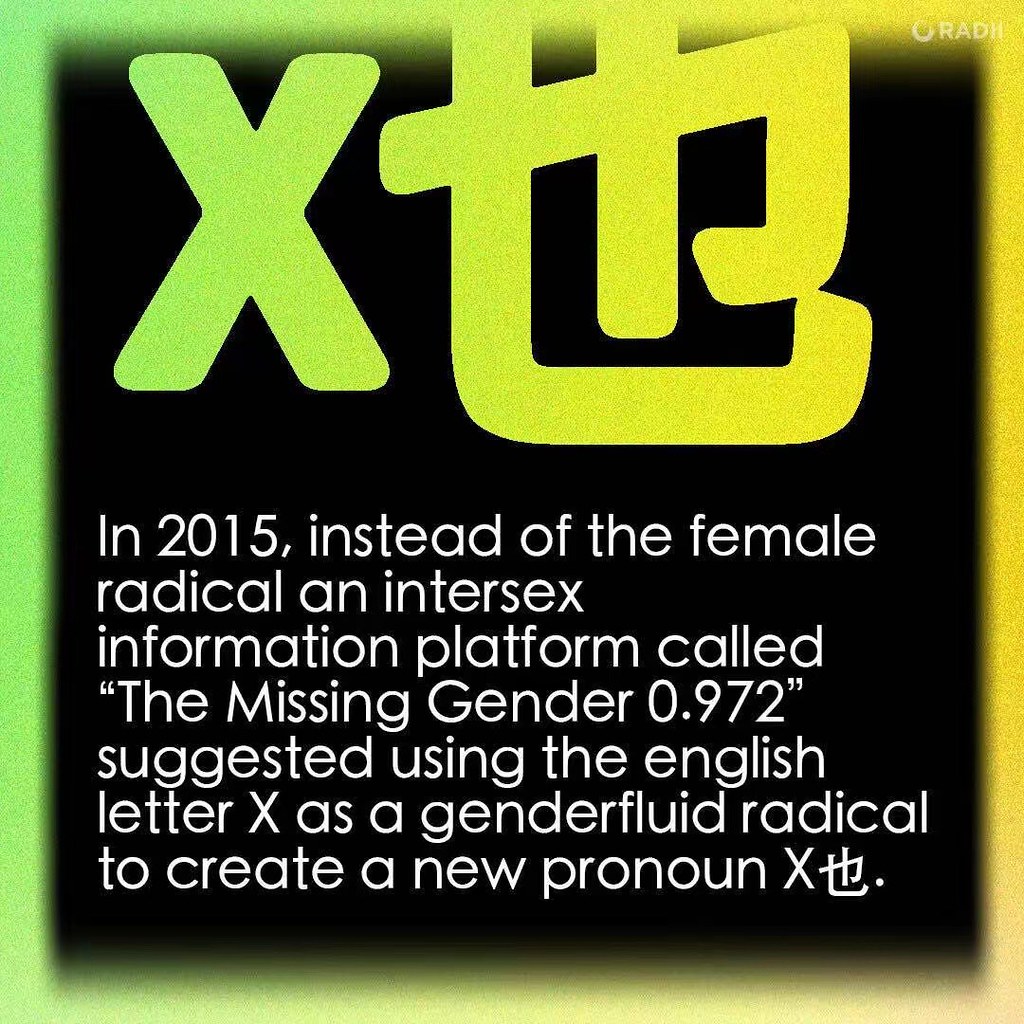Gender-Neutral Pronoun Options for Chinese Characters
I’m not going to write much here about Chinese pronouns 他 / 她 / TA (all “tā”), because the images below sum everything up nicely. (If you want more detail, be sure to click through to the full article).
Via Radii:





For uses of TA “in the wild,” see this article: TA: Pinyin with a Purpose.
I’m definitely not a fan of inserting the “X” into a Chinese character. It just breaks the natural aesthetic when done with an English X.
There are “more Chinese” ways of doing it, though (via Twitter, also via Radii, via Arianalife):

(So if you ever see the text “X也,” now you know what it refers to.)
Here’s a more creative attempt at a new pronoun character:

The 无 (wú) on the left side, of course, means “none” or “does not have.”
So it seems that we currently have these three gender-neutral Chinese pronoun options, each of which require two characters to type:
- TA (tā)
- X也 (tā)
- 无也 (tā)
Finally, if you’d like to see the “god pronoun” (closely related to these) be sure to check out this article: Respectful Characters.

Just curious, why is it X也 rather than 乂也, easier to write, Western connotation?
I think “easier to write” is it!